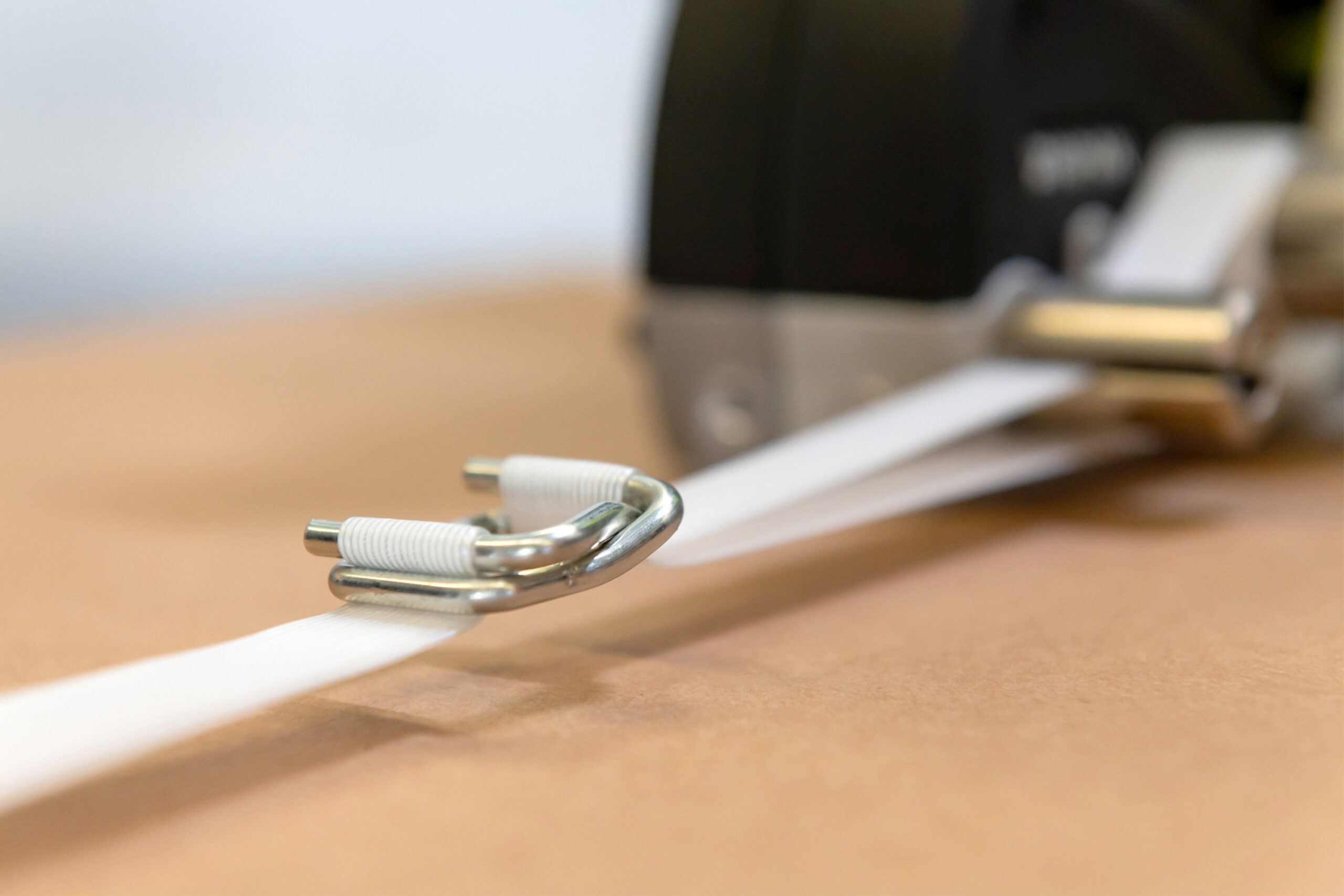
Cargo securing methods are a combination of devices, equipment, materials, procedures and technologies used to secure cargo during transportation, with the aim of ensuring the safety and protection of goods.
Load securing: some of the most common methods
While the primary goal of cargo securing is to ensure safety, those responsible for cargo must also ensure that the goods can be transported in the safest means. Below are examples of some of the most common load securing methods.
Lashing method
Using a load securing lashing method is a common and safe industry practice for handling large and heavy loads. It is a widely adopted practice in warehouses and suppliers to secure cargo to a device and to prevent loads from moving during transportation and storage. This practice also reduces the risk that cargo may shift or slip during transport, prolonging the useful life of the cargo and providing a higher level of safety.
Lashing systems for securing cargo must be suitable for each application, they must be inspected to verify their operation, and each load must be examined before lashing to verify the devices that are needed in each case.
All load securing systems and lashing devices used, such as lashing straps, must be checked immediately after completing the work to ensure the safety of people for a new use. Lashing systems are good industry practice to minimize risks associated with handling large and heavy loads.
This practice provides a variety of benefits, such as a longer useful life of the load, a better level of safety, reducing the risk of accidents and improved protection, as well as greater safety for the operator and the goods.

Local lock
Local blocking in securing goods refers to the use of appropriate materials to secure loads with the aim of preventing or avoiding the movement or fall of the load being transported. This practice is essential for transport safety, since an unstable or uncontrolled load can cause serious damage to goods or people.
Fastening material usually ranges from polyester tape and steel cables to some other material specially designed to securely hold a specific load. Some items need to be secured with special fastening buckles or clamps, while others are easily secured with a simple adjustable strap. A good local lock job allows for safe transportation of goods.
Global lock
Global locking in securing goods is a method used to keep the load of a unit stable to prevent damage from occurring during transport. It is made up of a variety of systems and tools designed to secure and secure cargo.
There are many ways, but among them we could name inflatable bags, which are very useful to avoid lateral and longitudinal movements during transport, or the goods protection system with padding to avoid the domino effect during transport.

Mooring methods
Which load securing method to choose? This will depend a lot on the type of merchandise and the means of transport. There are many types of lashing, such as top lashing, direct lashing, and locking lashing.
Top mooring. Push-friction lashings offer extra force, which is applied between the bottom products of the load and the stacking surface. To ensure that the angle is the highest possible, the tie-downs are located at the top of each load unit. These devices provide greater union, protecting the transported products.
Direct mooring. Direct lashing is a form of manual lashing, carried out with fastening means such as tapes, harnesses or cables, used to secure a specific merchandise or load within a vehicle or transport space. This technique ensures adequate control of a load, preventing movements or falls that could damage it or affect the safety of the operator.
Materials
There are also some essential materials, both for securing and protecting loads. One of these materials is protective corners, very appropriate to prevent damage to the covers of merchandise packaging.
Rubber anti-slip pads for transport are also essential for many types of loads, to avoid unnecessary movement of loads during transport, whether by sea, air or road.
Conclusion
Cargo securing is one of the most important tasks for any transportation company, since it guarantees the safety of the merchandise and the people involved during the transportation process. Therefore, it is essential to be clear about what methods will be used depending on the nature of the load, the packaging used and the chosen means of transport.
Likewise, you must take into account the existing regulations and restrictions in each country or region. Using appropriate cargo securing methods will not only reduce risks on the road but will improve business competitiveness by reducing transportation times.




